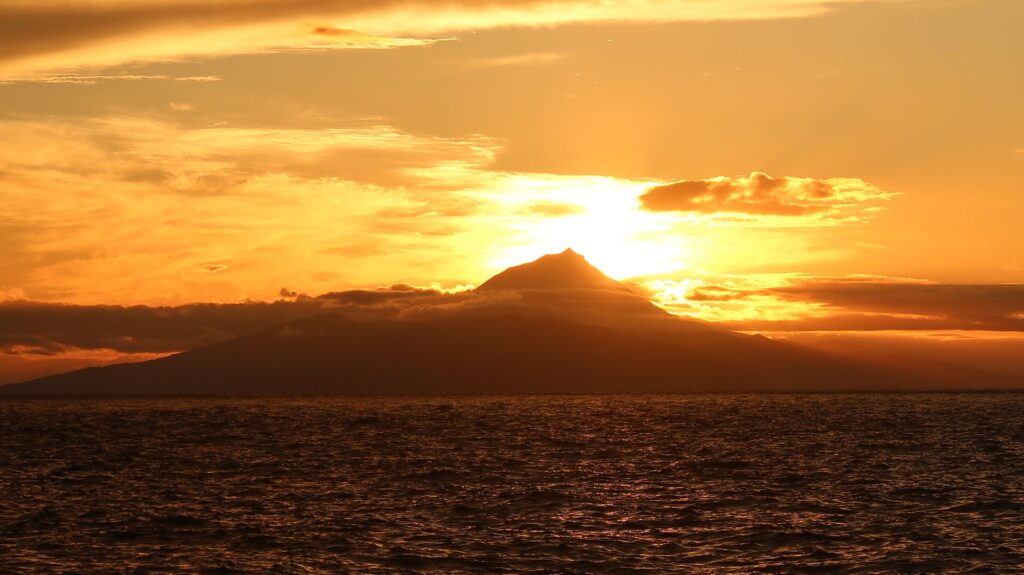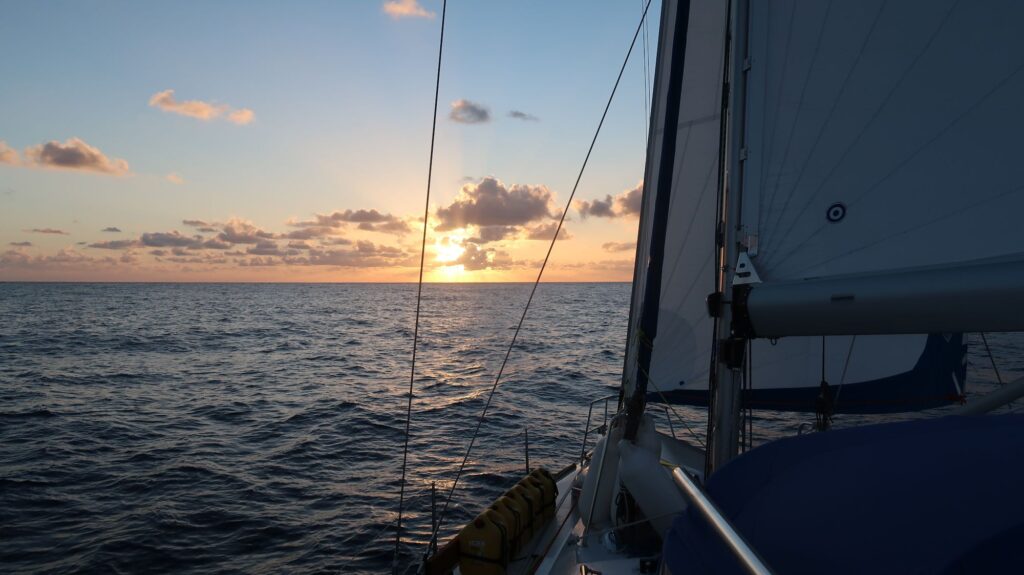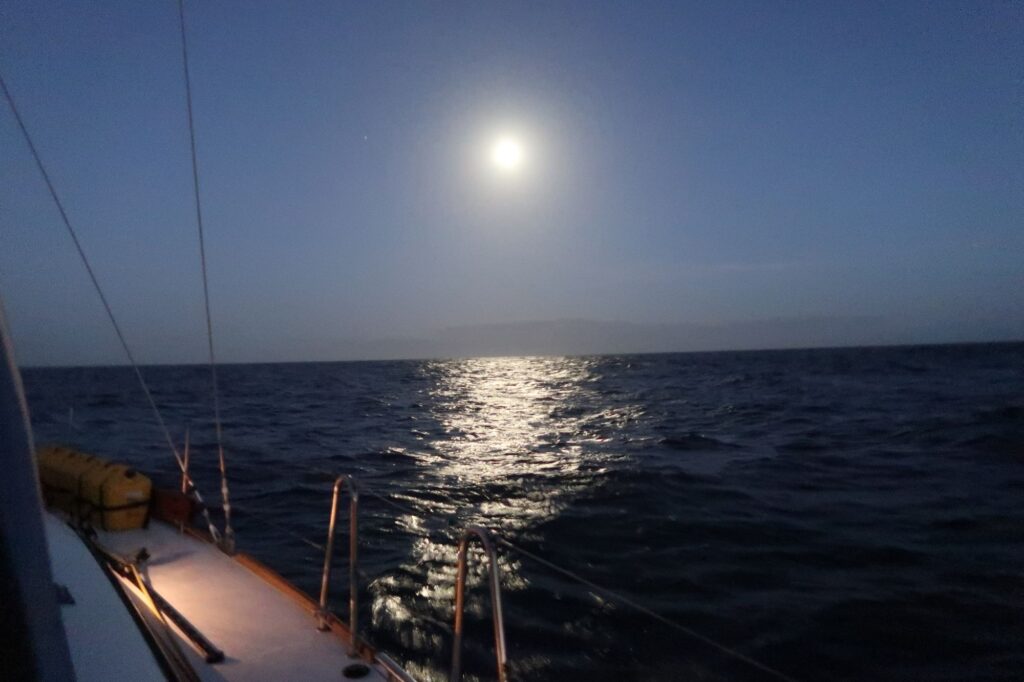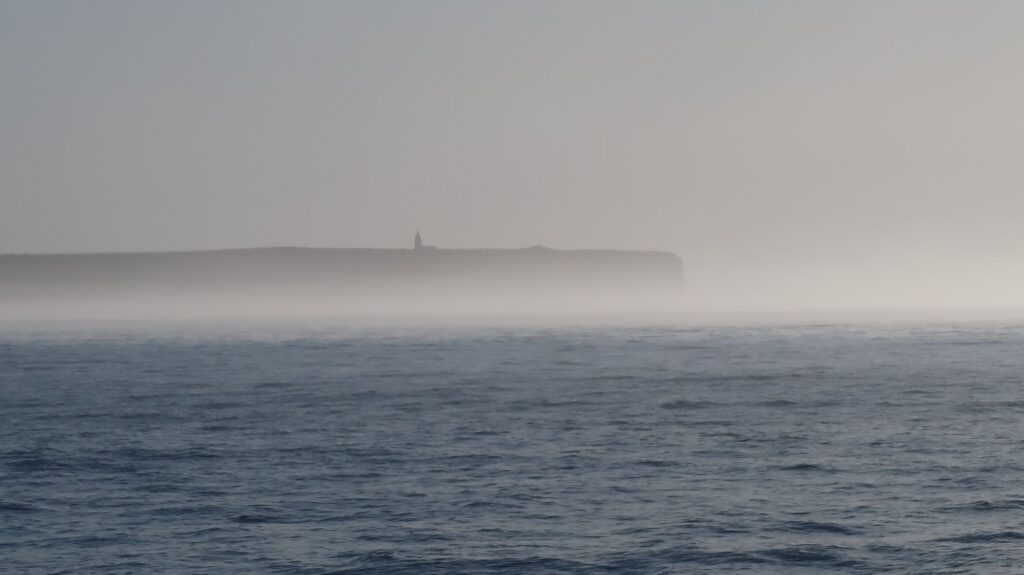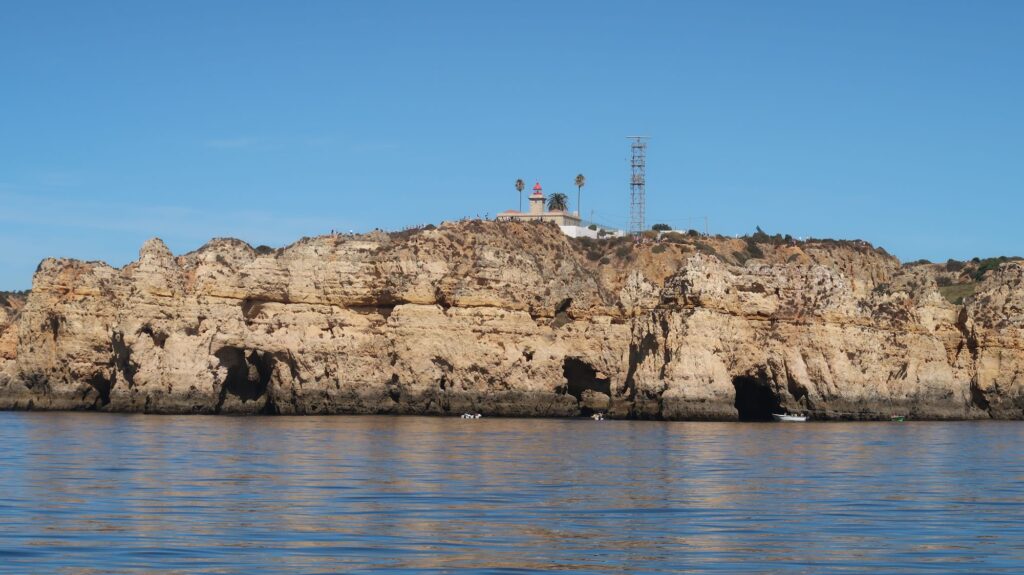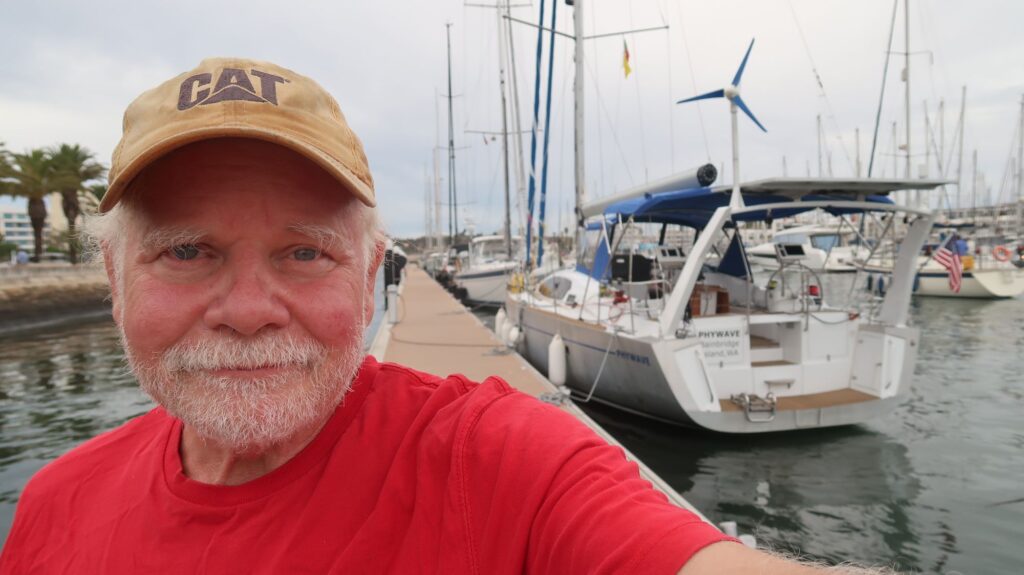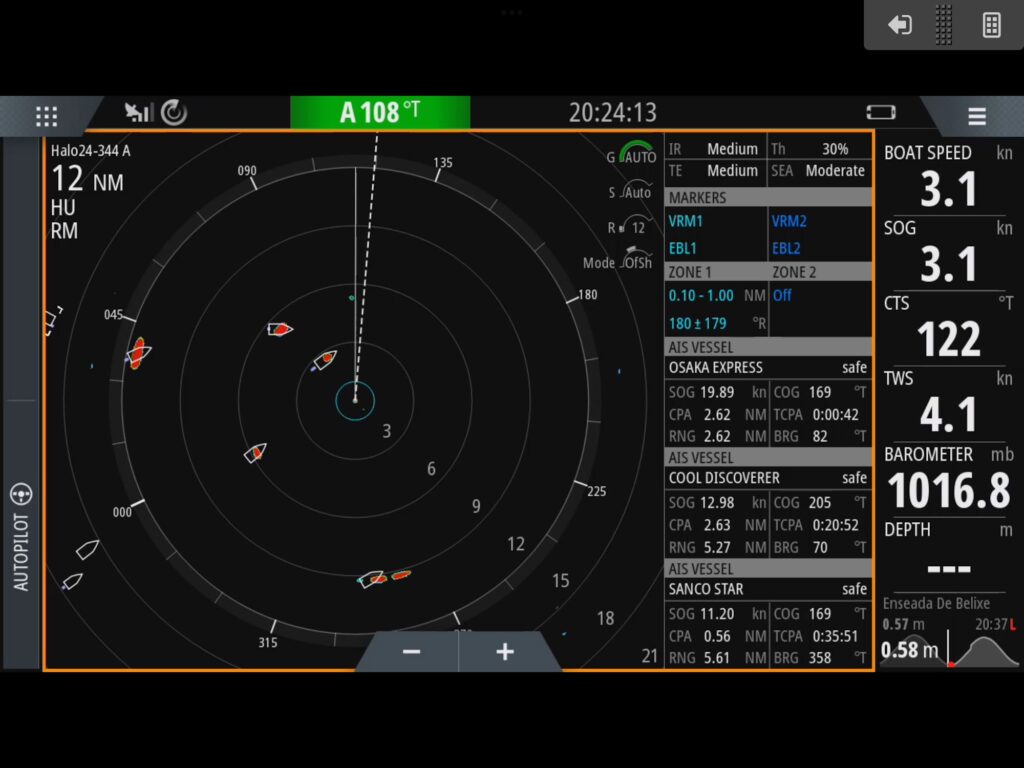I woke up to rain and cool temps this morning after arriving in Lagos, Portugal, Europe, yesterday, September 11, the first continent I planned to visit. The last few days of the passage here were not satisfying, mostly with light and variable winds not suitable for sailing so a lot of motoring was needed. Occasionally the wind would kick up to 9 or 10 kts, from a useful direction, so I’d set the sails and enjoy sailing for a while but after a few hours the wind would die again and the sails would come down rather than having them flog around in the gentle breeze.
Crossing the very busy shipping lanes that run north and south along the coast of Portugal in the middle of the night was a new experience. Amazingly, courses and positions were coordinated with very little ship-to-ship communication. I’m not sure what the big ships made of Phywave but my AIS transmission would have given them all the details. The AIS electronics automatically use the course and speed of other vessels, and Phywave, to determine whether there is a possibility of a collision, noting each vessel as “safe” or not. For that reason, it’s important to maintain course and speed so that if any vessel is making adjustments to avoid me, those adjustments will be effective. That said, there still are what I consider tight spacings, like a 400 meter long container ship that passed across my bow only 1100 meters away at 1 a.m. Amazing to see this ominous black wall of a ship right in front of me.
Passed the shipping lanes I was faced with a fog bank just as dawn was approaching. I was particularly concerned about small fishing boats near the coast that wouldn’t necessarily have AIS or radar, and just be presented to me as blips on my radar. The fog burned off and lifted just as I was rounding Ponta de Sagres for the turn to the ENE and Lagos. Though I was tired the remaining 15 nm to Lagos was easy, still no wind, so motoring.
I was given a convenient berth in the large Marina de Lagos, and of course the first night went out for steak dinner and caesar salad – definitely miss having fresh greens on board. Following dinner I wandered into the narrow streets of the old section of Lagos, still lively and vibrant with the sidewalk restaurants full of people at 10 pm, and street musicians in the little plazas. As I came around a corner a trio was playing “Country Roads” for a large crowd, some dancing, everyone singing along. It was good to get out, just walk around and see people enjoying life, after being confined to a 41 foot long space for the last 10 days. In all, a great night out for my arrival. I guess civilization does have some things to recommend it.
